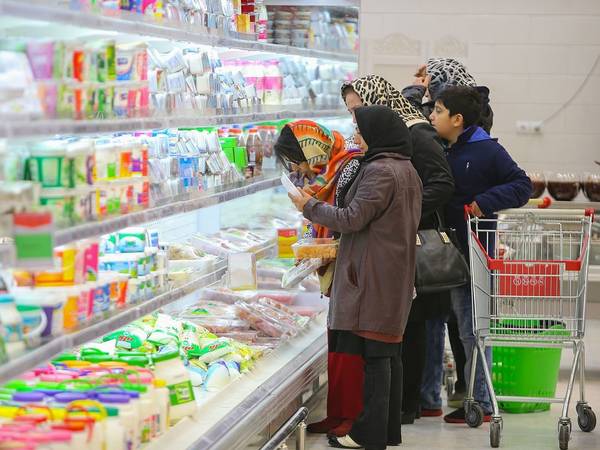Over 32 million Iranians—more than one-third of the population—were living below the poverty line by March 2022 and are now grappling with food insecurity, according to a report by the Iran Chamber of Commerce Research Center.
The report, released on Saturday, attributed the trend to decades of double-digit inflation, which has significantly worsened since 2019, topping 40 percent. Whaqt triggered the jump in inflation was US economic sanctions imposed in 2018.
Food poverty in Iran surged from 18 million people in 2017 to over 26 million by 2020, the report said, noting that with the current inflation rate discussions about investment, economic growth, and poverty reduction is impractical.
The report argues, "Given the current circumstances, monetary and fiscal policies should focus on stabilizing inflation rather than pursuing significant reductions. Expecting a substantial decline in inflation through specific monetary and fiscal measures is unrealistic."
The Chamber of Commerce Research Center also admitted that the government’s measures and policies to curb the sharp devaluation of the national currency and support production had limited success. Since 2018, Iran's rial has fallen more than 15-fold against the US dollar as sanctions reduced Tehran's oil exports.
“Considering the pressures on Iran's economy due to sanctions, negative economic prospects, and the severe damage to production and investment, as well as the limited success of monetary control policies, it would be better not to overly focus on strict contractionary policies... Instead, efforts should be directed toward managing inflation and achieving price stability to stimulate production,” read the report.
According to a recent report by the parliament’s research center, Iran's poverty rate increased by 0.4 percent in the last Iranian year (ended March 2024) compared to a year earlier, reaching 30.1%. This means that at least one-third of the population was unable to meet their basic needs and lived below the poverty line.
Additionally, a report by Ham-Mihan newspaper in Tehran said Sunday that more than half of Iranian households live below the relative poverty line, often resorting to installment purchases for basic necessities like meat, dairy, and household items.
The study by Iran's Chamber of Commerce also highlighted systemic issues fueling inflation, such as government inefficiency, excessive spending on public sector, and reliance on printing money to cover budget deficits.
To offset budget deficits and secure loans from financial institutions, the Iranian government has pressured the Central Bank to print unsupported money. According to IMF figures, liquidity in Iran has surged annually by 25-40% in recent years, with projected increases above 27% this year and next.
This increased liquidity has fueled runaway inflation. Over the past several years, Iran has consistently ranked among the top 10 countries with the highest inflation rates, and next year it is expected to have the sixth-highest inflation globally.
